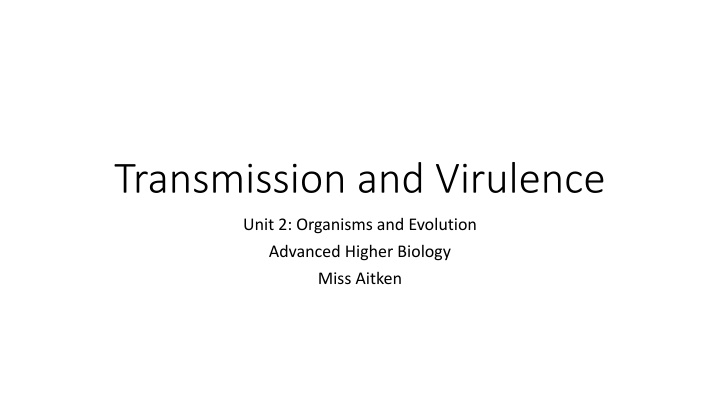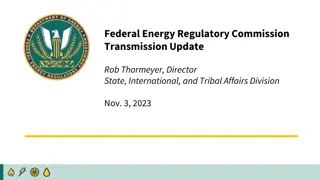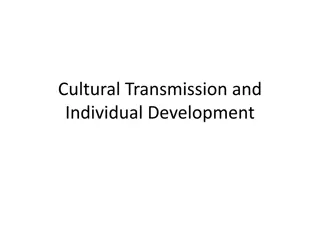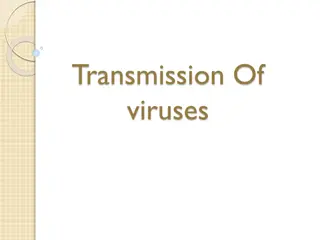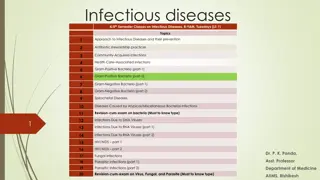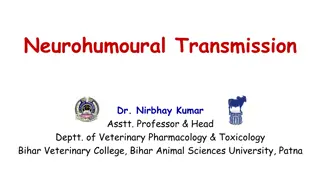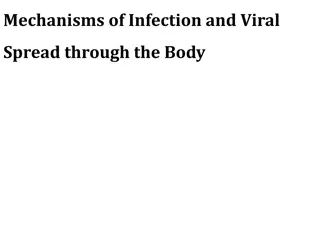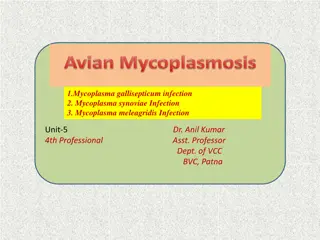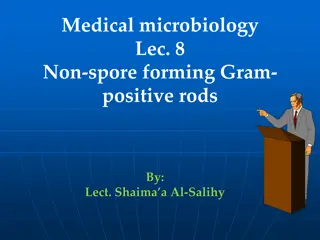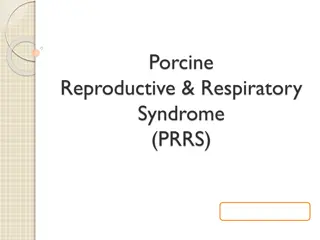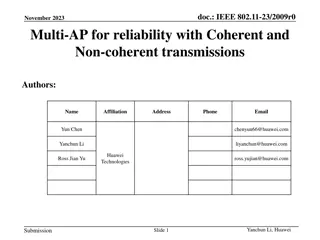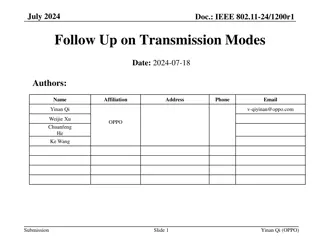Transmission and Virulence
The spread of parasites to new hosts and the harm they cause, known as virulence, play crucial roles in evolutionary fitness. Explore different transmission strategies and factors influencing transmission and virulence in organisms. Learn about the impact of overcrowding, vectors, waterborne dispersal, host behavior exploitation, and factors enhancing virulence like immune suppression and host modification.
Download Presentation

Please find below an Image/Link to download the presentation.
The content on the website is provided AS IS for your information and personal use only. It may not be sold, licensed, or shared on other websites without obtaining consent from the author.If you encounter any issues during the download, it is possible that the publisher has removed the file from their server.
You are allowed to download the files provided on this website for personal or commercial use, subject to the condition that they are used lawfully. All files are the property of their respective owners.
The content on the website is provided AS IS for your information and personal use only. It may not be sold, licensed, or shared on other websites without obtaining consent from the author.
E N D
Presentation Transcript
Transmission and Virulence Unit 2: Organisms and Evolution Advanced Higher Biology Miss Aitken
Transmission and Virulence The spread of a parasite to a new host is called transmission The harm that a parasite causes is known as it s virulence. The parasite s evolutionary fitness is determined by how successful it is at transmitting it s offspring into new hosts.
Transmission and Virulence Strategy A: low transmission, low virulence: Employed by the virus which causes the common cold. Parasite relies on direct transmission and can only survive outside the body for 3 hours. High virulence would hamper transmission if you can t leave the house, you can t pass it on. Strategy B: High transmission, high virulence: Employed by diseases like cholera and malaria. Both multiply inside the host and are cause extreme damage, often killing the host. High transmission ensures a good spread.
Factors that Increase Transmission Overcrowding / High population density more people, smaller spaces between them. Use of vectors parasite can spread even when host is incapacitated Waterborne dispersal stages water spreads things faster If the parasite is able to exploit the natural behaviour of the host, this can also increase transmission mind-altering strageties!!
Factors that Increase Virulence Suppression of the host s immune system so that parasites survive and reproduce inside the host without being attacked Modify the size of the host so that it grows much larger than average and can support the reproduction of more parasites Reduce the host s reproductive rate so more of the host s energy can be directed towards reproducing the parasite instead of it s own offspring.
